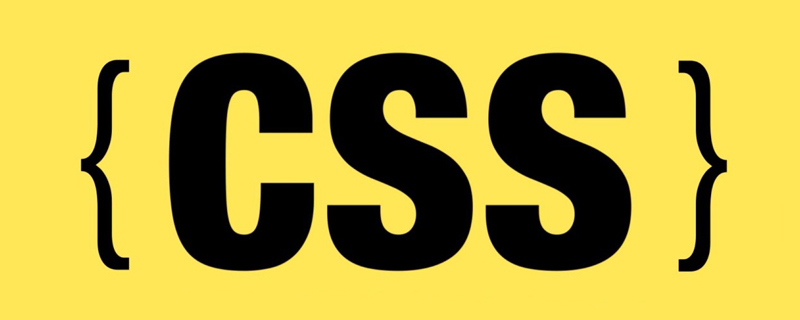 Web Front-end
Web Front-end CSS Tutorial
CSS Tutorial Application of CSS rule cascade Several points that must be paid attention to in CSS_Experience exchange
Application of CSS rule cascade Several points that must be paid attention to in CSS_Experience exchangetheoretical foundation is necessary, and practice is a way to improve and understand theory. both are equally important. any designer and developer who leaves the balance of the two, no matter which side they prefer, will make mistakes either left or right. but what is the practical use of this method i am talking about. obviously, it cannot create a rounded rectangle for us, nor can it create a column layout for us, nor can it give us a navigation bar fixed at the head of the document. the practical application of this algorithm lies in: good css programming practices. this is a macro practice that is just as important as the micro practices i just mentioned, but is much more difficult to master.
this article does not intend to include all good css programming specifications, nor is it possible. all i can provide is a summary of my personal specifications for writing css. i want these specifications to be as close as possible to the operation of css. intrinsical.
don’t use inline css
user style is not under your control
don’t use important rules
write css from low to high according to specificity
before the three points are not the focus of what i am talking about, i will just mention them one by one.
the particularity of inline css is the highest. if the attributes in your css file conflict with inline css, then the attributes in your css file will be invalid. this is different from the fact that we only debug the style in the css file. habits do not match. inline css is also ugly, it inserts styles into the html document, so it should be abandoned.
if the user sets user style to important, no matter how you write css rules, the user's important statement cannot be overridden, so trying to override all user styles is futile. happily we don't have to think about this anymore.
the important rule is an outlier. it does not conform to our usual way of thinking. no matter how we increase the specificity and order of css rules, the important rule will overwrite the rules that compete with it, which will also disrupting the customary rules of css rules brings trouble to debugging. if you want to use the important rule to hack the browser, then you should apply the rule in a selector that points to a unique element. (ps. hack should be the last one considered in the solution, because it is too ugly.)
last point, how to write css from low to high specificity?
the key is modular css.
add global css
add unified css for the current page
divide the page into several modules
use id hooks on each different module, and use class hooks on the same module
add unified css for each module
divide each module into several sub-modules, and return to step 4 to start looping until the style addition is completed.
writing good css is a design problem, not an implementation problem. we should first write global css content with very low specificity, which is our commonly used reset.css. it is the default style for all pages throughout our website.
if any page has a unique unified style, such as a page with a different background than other pages, then we can add an id to a page and then write the unified css of the current page under the id.
body#special{
background-color:black;
}after the unified style is written, we divide the page into several modules. if these modules have basically the same style, then use class hooks. if the styles are not the same, then use id hooks, and you should follow this principle every time you divide into modules in the future. because class is not very specific, so if it is not a module that looks obviously similar, class should not be used. the name of the id can usually be used as the name of the module. such as head, bottom, etc. the id selector plays a key role in cascading, because id is exclusive and has high specificity, which can prevent css rules from being inadvertently overridden.
in a certain module we may have some unified css, then we need to use the id selector to write the unified style under the current module.
#head p{
color:red;
}when adding a class hook, i recommend using the id of the parent module (or the page itself) as the first part of the class name. if i add an independent page (body#special), then after dividing the module into a module for the page, i should name the module of the page special_head, special_bottom, etc.
or when using class hooks in some page modules, you should use head_col etc. the advantage of this is that we don't need to use
#head .col{
/* 头部中每一列的样式 */
} but can directly use
.head_col{
/* 头部中每一列的样式 */
} so we don't have to worry about naming conflicts.
for elements with id selector added directly under the module, we can use the selector directly and add the id of the parent module before its name.
#head_navigator{
/* 头部中导航栏的样式 */
}to achieve modular css, we should try to prevent cross-module css from appearing. i think a good principle is: if the cross-module feature of a certain style is not your it's obvious at a glance, then don't use cross-module css. one exception is global css or unified css within a module. for those that are not clear at a glance and do not have a unified style, it is recommended to define them separately under each sub-module. this is just like the object-oriented design in writing java programs. we need to reduce the interdependence between modules so that the css rules of the same module are together and those that are slightly different are completely separated. this is not only easy to maintain, but also ensures write css from low to high specificity to prevent css rules from being accidentally overwritten
the above are the points that must be paid attention to when applying css with cascading css rules_experience exchange content, more for related content, please pay attention to the php chinese website (www.php.cn)!
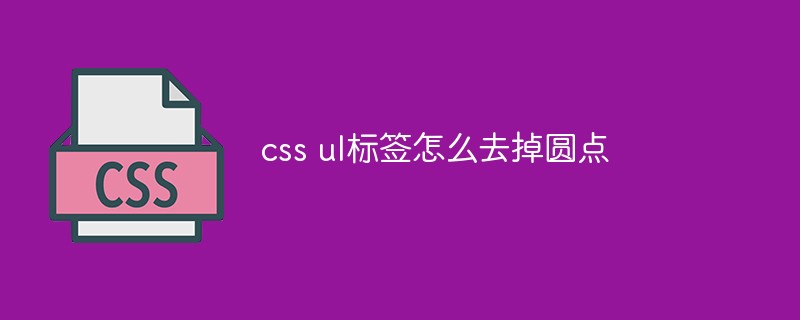 css ul标签怎么去掉圆点Apr 25, 2022 pm 05:55 PM
css ul标签怎么去掉圆点Apr 25, 2022 pm 05:55 PM在css中,可用list-style-type属性来去掉ul的圆点标记,语法为“ul{list-style-type:none}”;list-style-type属性可设置列表项标记的类型,当值为“none”可不定义标记,也可去除已有标记。
 css与xml的区别是什么Apr 24, 2022 am 11:21 AM
css与xml的区别是什么Apr 24, 2022 am 11:21 AM区别是:css是层叠样式表单,是将样式信息与网页内容分离的一种标记语言,主要用来设计网页的样式,还可以对网页各元素进行格式化;xml是可扩展标记语言,是一种数据存储语言,用于使用简单的标记描述数据,将文档分成许多部件并对这些部件加以标识。
 css3怎么实现鼠标隐藏效果Apr 27, 2022 pm 05:20 PM
css3怎么实现鼠标隐藏效果Apr 27, 2022 pm 05:20 PM在css中,可以利用cursor属性实现鼠标隐藏效果,该属性用于定义鼠标指针放在一个元素边界范围内时所用的光标形状,当属性值设置为none时,就可以实现鼠标隐藏效果,语法为“元素{cursor:none}”。
 css怎么设置i不是斜体Apr 20, 2022 am 10:36 AM
css怎么设置i不是斜体Apr 20, 2022 am 10:36 AM在css中,可以利用“font-style”属性设置i元素不是斜体样式,该属性用于指定文本的字体样式,当属性值设置为“normal”时,会显示元素的标准字体样式,语法为“i元素{font-style:normal}”。
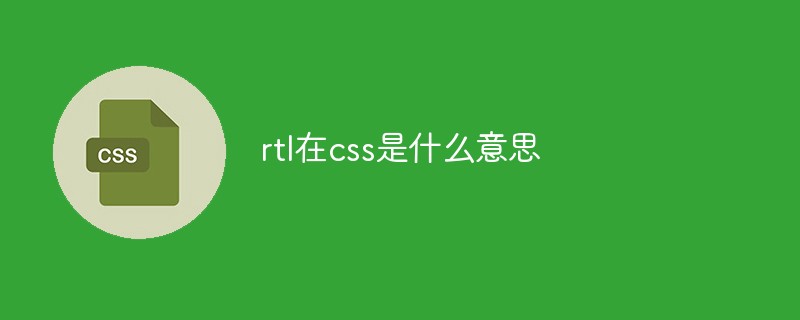 rtl在css是什么意思Apr 24, 2022 am 11:07 AM
rtl在css是什么意思Apr 24, 2022 am 11:07 AM在css中,rtl是“right-to-left”的缩写,是从右往左的意思,指的是内联内容从右往左依次排布,是direction属性的一个属性值;该属性规定了文本的方向和书写方向,语法为“元素{direction:rtl}”。
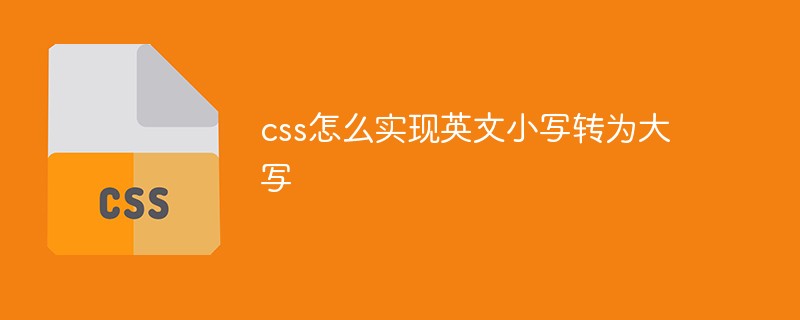 css怎么实现英文小写转为大写Apr 25, 2022 pm 06:35 PM
css怎么实现英文小写转为大写Apr 25, 2022 pm 06:35 PM转换方法:1、给英文元素添加“text-transform: uppercase;”样式,可将所有的英文字母都变成大写;2、给英文元素添加“text-transform:capitalize;”样式,可将英文文本中每个单词的首字母变为大写。
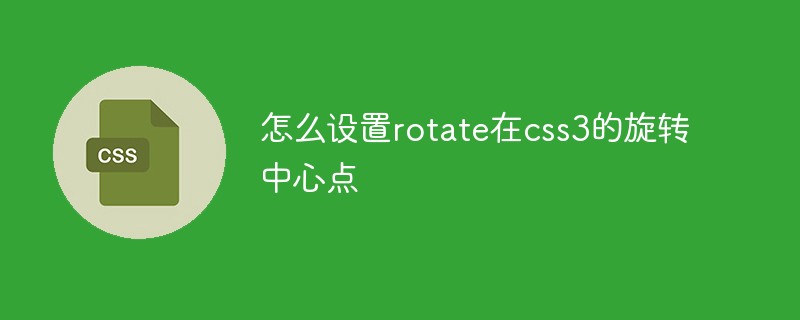 怎么设置rotate在css3的旋转中心点Apr 24, 2022 am 10:50 AM
怎么设置rotate在css3的旋转中心点Apr 24, 2022 am 10:50 AM在css3中,可以用“transform-origin”属性设置rotate的旋转中心点,该属性可更改转换元素的位置,第一个参数设置x轴的旋转位置,第二个参数设置y轴旋转位置,语法为“transform-origin:x轴位置 y轴位置”。


Hot AI Tools

Undresser.AI Undress
AI-powered app for creating realistic nude photos

AI Clothes Remover
Online AI tool for removing clothes from photos.

Undress AI Tool
Undress images for free

Clothoff.io
AI clothes remover

AI Hentai Generator
Generate AI Hentai for free.

Hot Article

Hot Tools

Dreamweaver Mac version
Visual web development tools

mPDF
mPDF is a PHP library that can generate PDF files from UTF-8 encoded HTML. The original author, Ian Back, wrote mPDF to output PDF files "on the fly" from his website and handle different languages. It is slower than original scripts like HTML2FPDF and produces larger files when using Unicode fonts, but supports CSS styles etc. and has a lot of enhancements. Supports almost all languages, including RTL (Arabic and Hebrew) and CJK (Chinese, Japanese and Korean). Supports nested block-level elements (such as P, DIV),

PhpStorm Mac version
The latest (2018.2.1) professional PHP integrated development tool

SublimeText3 Chinese version
Chinese version, very easy to use

MinGW - Minimalist GNU for Windows
This project is in the process of being migrated to osdn.net/projects/mingw, you can continue to follow us there. MinGW: A native Windows port of the GNU Compiler Collection (GCC), freely distributable import libraries and header files for building native Windows applications; includes extensions to the MSVC runtime to support C99 functionality. All MinGW software can run on 64-bit Windows platforms.




